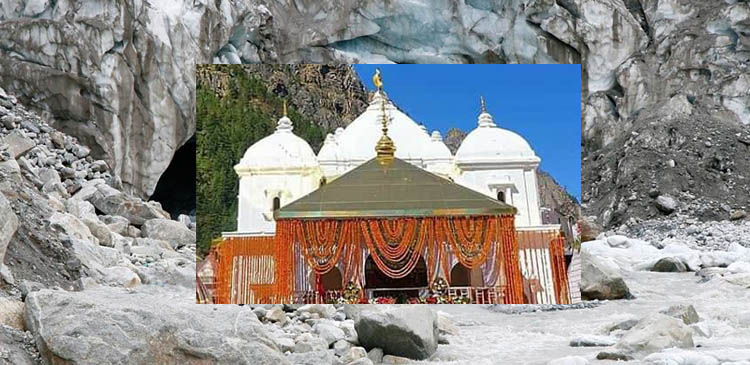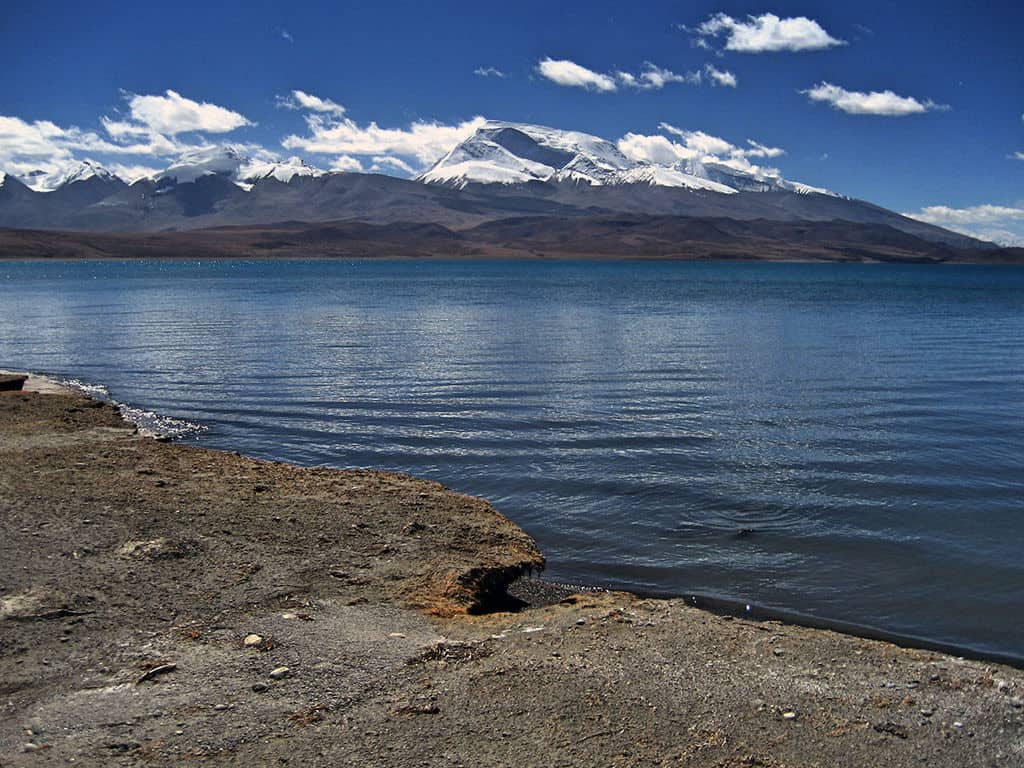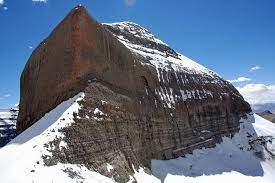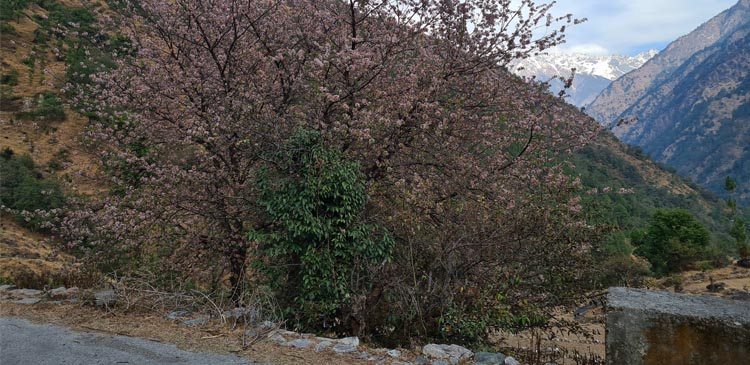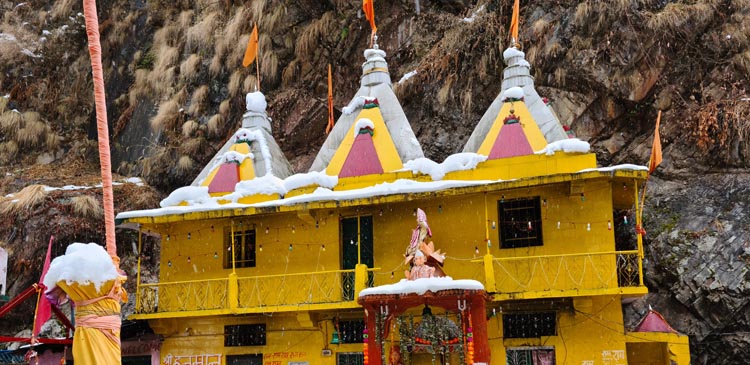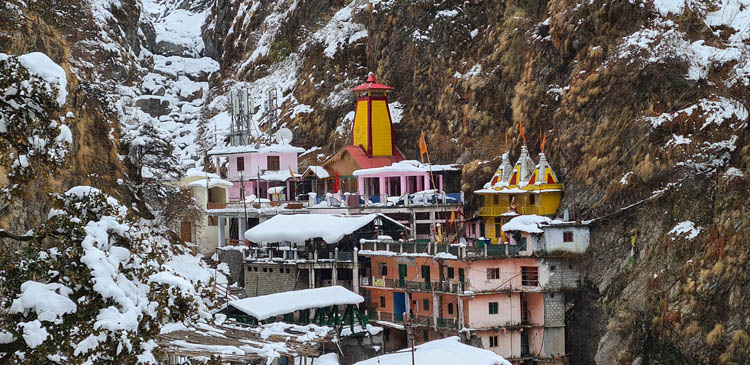Gangotri is the origin of the River Ganga, (where it is known as the River Bhagirathi) and the seat of the goddess Ganga. The name changes to Ganga from Devprayag onwards, where it meets the River Alaknanda. The origin of the holy river is at Gaumukh, set in the Gangotri Glacier, and is a 19 km trek from Gangotri. It is one of the four sites in the Chota Char Dham(or Chardham) pilgrimage circuit.
The original Gangotri Temple was built by the Nepalese general Amar Singh Thapa. The Semwal family of pujaris supervises the ritual duties of the temple. These pujaris hail from Mukhba village.
The historical significance of Gangotri
According to Hindu mythology, Goddess Ganga took the form of a river to absolve King Bhagiratha’s predecessors’ sins, following his severe penance of several centuries. Bhagiratha, the grandson of King Sagar, is believed to have meditated to please the Goddess Ganga enough to cleanse the ashes of his ancestors, and liberate their souls, granting them salvation or Moksha.
Another legend states that the river Ganga descended to earth on this day.
The Gangotri temple architecture
The beautiful temple architecture of Gangotri has drawn the attention not only of pilgrims for religious purposes but also generated deep interest among architects and scholars of history. You may take a closer look at the features of the temple, below:
- The Gangotri Temple architecture is built following the Nagara style with 5 Small apexes, 20 ft. In height.
- Intrinsic carvings on the exteriors— unprecedented for any Hindu temple architecture—give the temple its elegant appearance. The temple has been created by following the Katyuri style of architecture, common in Nepal and its foothills. The class started from the regime of the Nepalese Katyuri dynasty.
- However, the interiors of the temple follow a typical temple architectural pattern.
- After entering the premises, the pilgrims are directed inside the assembly hall or the temple’s sabhagriha. This assembly hall makes its way and leads up to the GarbhaGriha or the temple’s inner sanctum, where the idol of the presiding deity is placed.
- The inner sanctum consists of a raised platform where the idol of Ganga idols of various goddesses like Yamuna, Saraswati, Annapurna, etc. are also present. This shrine is also built in a way where the presiding idol faces east so that the very first rays of the sun are felt on it.
Historians and architects agree that the most permanent sign of history in architecture. The Gangotri temple once again proves the point. Not only is it aesthetically beautiful, but also indicates the cultural exchanges between two different cultures, had resulted in a rich heritage a long time ago.
Touristic significance of the Gangotri Temple and the adjoining area
- It is to be remembered at this point that Gangotri is generally visited by the tourists who opt for any of these: the Char Dham, the Chardham Yatra Uttarakhand, Chardham Yatra (or Char Dham Yatra), for these save time, the strain of journey and money. This means tourists and pilgrims generally touch upon Gangotri while they also visit the other three pilgrimage sites– Kedarnath, Badrinath, and Yamunotri.
- Subsequently, Gangotri occupies a prime position in all the Chardham Tour Packages or any Chardham Yatra package. As per the figures, Indian tourism expects more than 15 lacs (1.5 million) pilgrims to visit Chardham in 2022.
Also, there are significant and popular places to visit near the Gangotri Temple. These include:
- The Bhagirath Shila, which is believed to be the holy rock where King Bhagirath prayed to Lord Shiva.
- Pandava Gufa— located 1.5 km from Gangotri— is the place where the Pandavas are believed to have meditated and rested en route Kailash.
- In the pilgrimage journey of Chota Char Dham, Gangotri is often visited after Yamunotri (located in the western region of Garhwal Hills). Pilgrims generally make Uttarkashi their base camp.
- The time taken from Uttarkashi to Gangotri temple is about 4 hours by road.
The ideal time to visit the Gangotri Temple
The temple is closed from Diwali day every year and is reopened on Akshaya Tritiya. During this time, the idol of the goddess is kept at Mukhba village, near Harsil.
Also remember that each year the Chardham Yatra commences on specific dates, which corresponds with the temples being open to the public.
How to travel to Gangotri
Gangotri can be reached via trains and flights and cars. However, it is best to book a travel agency to take off your troubles.
Minibusses, jeeps, and cars are readily available. The nearest train station is Haridwar and Dehradun, the nearest airport is Dehradun.
Vehicles reach the nearest motorable points to Badrinath temple and Gangotri, Yamunotri, and Kedarnath. These points are at a distance of 10 to 15 km from the nearest motorable road.
Now there are many facilities, including road trips, and even helicopters, too.
It is easier than ever to reach Gangotri now
The under-construction Char Dham National Highway will soon be accessible. two-lane (in each direction) express National Highway connecting the four holy places in Uttarakhand states, namely Badrinath, Kedarnath, Gangotri, and Yamunotri. The project includes 900 km of national highways, which will connect the whole of Uttarakhand state. The proposed road will complement the under-construction Char Dham Railway.
The Ministry of Tourism under the Govt. of India has already set upon the undertaking of the construction of the Chota Char Dham Railway project, commencing since 2017, it is now extremely convenient to plan your trip to the Char Dham.
The construction, a 321 km long route, will connect nearly the North of the country. The railway has a Y-shaped route divided into two directions: The Gangotri–Yamunotri spurs: The prominent spur will go to Gangotri, another Y–fork for the spur to Yamunotri.
Kedarnath–Badrinath spurs: The prominent spur will go to Kedarnath, which leads as a Y–fork for another spur to Badrinath.
